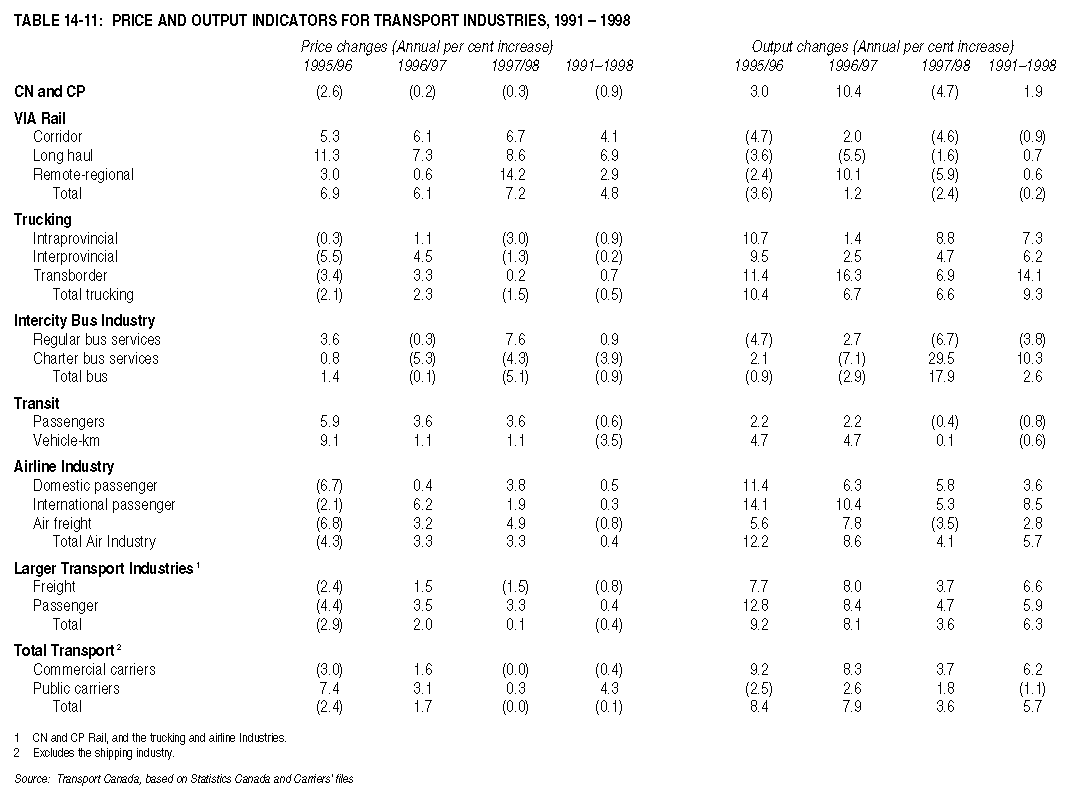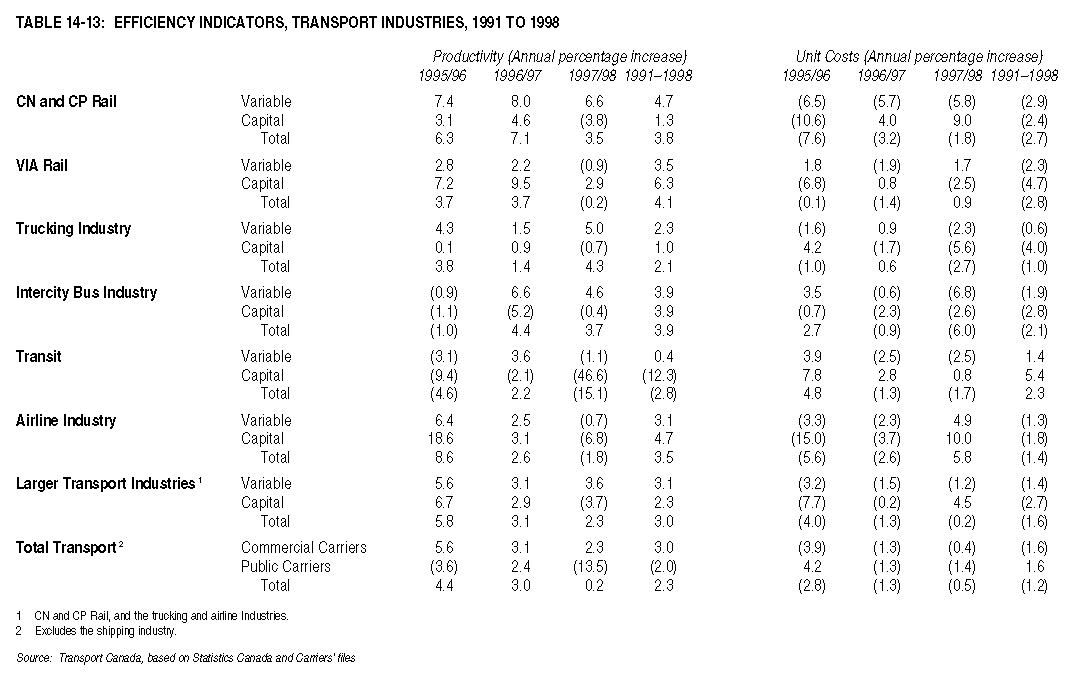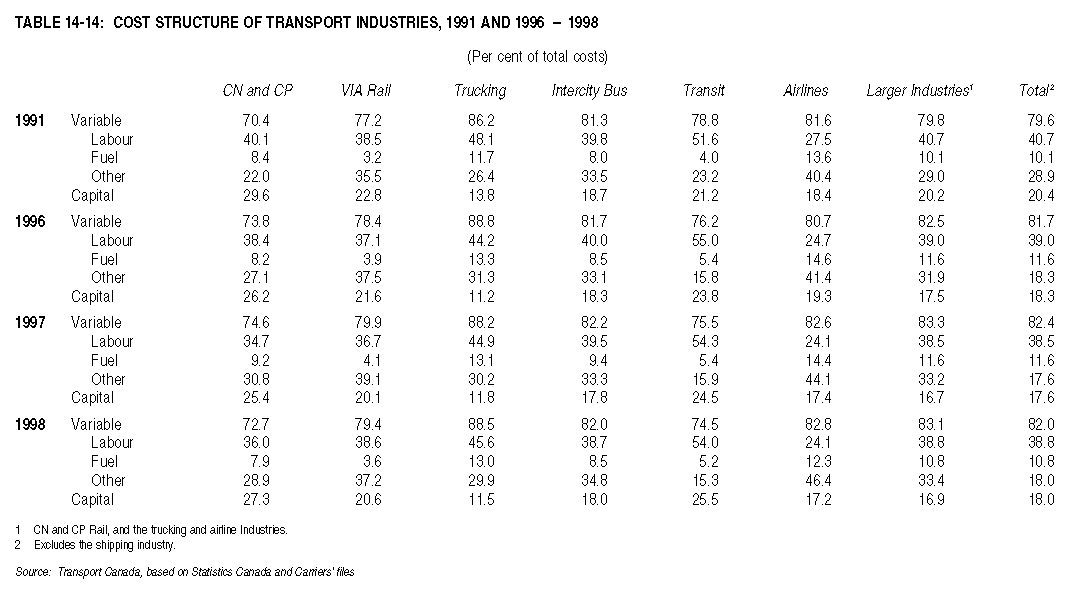14
PRICE, PRODUCTIVITY AND FINANCIAL PERFORMANCE IN THE
TRANSPORTATION SECTOR
Between 1991 and 1998, productivity
in transport industries has grown each year.
When markets are competitive and efficient, productivity gains
can be passed on,
partially or totally, to users in the form of lower prices.
The transport sector's economic performance gives a clear picture
of this sector's contribution to the entire economy.
The economic performance of a sector can be determined by productivity
gains over time and by the distribution of those gains among various
economic agents. Of particular interest are the productivity gains
passed on to users as lower prices. Table 14-1 shows the performance
indicators for selected transport industries between 1991 and
1999.

Between 1991 and 1998, productivity growth in transport industries
averaged 2.5 per cent a year. In 1998, this slowed to 0.2 per
cent.
When markets are competitive and efficient, productivity gains
can be passed on, partially or totally, to users in the form of
lower prices. Between 1991 and 1998, the prices of selected
transport industriesNote 1 fell in real terms by 0.4 per cent
per year. In 1999, the prices of the same firms increased nominally
by 1.4 per cent. Part of the increase in transport demand
since 1991 has come from the upturn of the economy. However, lower
transport prices also contributed by generating stronger demand.
Between 1991 and 1998, the output of large transport firms advanced
annually by 6.4 per cent.
The rest of this chapter discusses the individual performance
of each transport industry, giving highlights of the most recent
year for which data is available and reviewing performance indicators.
The analysis of the performance of the shipping industry could
not be updated to 1998 as a result of data limitations.
Key statistics for each transport industry are presented in
tabular form at the end of this chapter. Table 14-11 presents
price and output indicators; Table 14-12 presents user and cost
savings. Table 14-13 presents productivity and unit costs
indicators, and Table 14-14 presents cost structures.




NOTES:
1
Larger firms in rail freight, air and trucking account for 92
per cent of the revenues of all the firms reviewed in this chapter.
|

